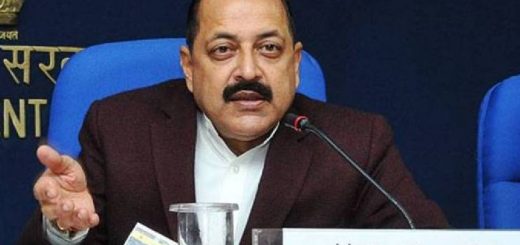Breathing the right way…..
By Vivek Prasad, @infodeaofficial;

Vivek Prasad, Content Head, INFODEA
Restless, rebellious and irksome are some of the words ascribed to todays youth by parents and teachers across India, The older generation, it seems are losing the battle to control the youth of today so as to make the latter into useful and determined citizens of the future. Many of the parents are of the opinion that ionculcating in the youth the spirit of ancient Indian wisdom of yoga would go a long way in moulding the youth of today into future supermen
Great, wonderful but how does one practise it? According to leading educationist and mentor of many a wayward youngster through the practise of yoga, Brahmanayakam Philips, based in a tiny hamlet near the picturesque Neyyar Dam, the answer lies in the ancient art form of Pranayama.
‘Pranyama the very word conjures up images of a blissful life and a disease free state of mind, there are many schools of indian traditional holistic healing schools which prescribes the right method of practising pranayama, ‘ says the bearded savant with a wry smile.
So how does one practise Pranayama the right way to harness the energy of today’s youth to achieve more in life? Questioned this writer to the man who seemed to be forever at peace with himself
‘During the practice of postures as well as pranayama, it is important to balance the flux of air entering through the two nostrils. Each nostril must be open and flowing freely. Generally, this is not the case in the beginning of a yoga session. There are even many adepts who have one nostril permanently blocked up, or partially obstructed. This modifies the pranic conditions, the energy level in the organism, ‘ said the yoga expert.
Watching the flow of air
 Dwelling further on the topic he said , ’Witnessing the breath is absolutely crucial. Sitting in vajrasana with the spine straight, direct your attention to the flux of air which is entering and leaving via the two nostrils. If there is a slight imbalance, it is perfectly normal, and you can rebalance the two flows at once. If there is a real and complete obstruction, however, this will not be possible.
Dwelling further on the topic he said , ’Witnessing the breath is absolutely crucial. Sitting in vajrasana with the spine straight, direct your attention to the flux of air which is entering and leaving via the two nostrils. If there is a slight imbalance, it is perfectly normal, and you can rebalance the two flows at once. If there is a real and complete obstruction, however, this will not be possible.
You must have the subjective impression that the volume of air entering by the right nostril is the same as the volume of air entering the left nostril. Take your awareness into the nostrils and witness the fresh air which is entering and the stale warmer air which comes out. At this stage you must breathe without concern for the duration, but be concerned simply with the volume of air entering the two nostrils. If the imbalance is only slight, which is normally the case, then direct your attention more particularly towards the mucus membrane which covers the interior of your nostril. If one nostril is a little less free flowing than the other, direct your attention there in a calm way and consciously relax it. You will soon feel the nostril flowing freely.
In the nostrils there is an erectile tissue very similar to the tissue of the principal erogenous areas of the body. This tissue is engorged or emptied of blood according to requirements. It reacts very quickly so that if you find yourself suddenly plunged into an aggressive mood, the inflation of the nasal mucus membrane will immediately reduce the passage of air in the nostrils.
Different environments also affect the nasal mucosa and the airway passages. For example:
1. In a polluted atmosphere the nasal mucosa inflates and the airway passages become constricted.
2. In a normal atmosphere the nasal mucosa is neither turgid nor flaccid and the airway passages are of middle calibre.
3. In a pure atmosphere high in prana the nasal mucosa retracts allowing a greater quantity of air to reach the dilated airways. The breathing is deeper, the heart accelerates and the tension of oxygen in the blood increases.
The state of turgescence of the nasal mucosa has deep repercussions on all the airway passages and the whole respiratory system responds accordingly. Concentration upon the nasal mucosa and relaxation of this area induces relaxation throughout the respiratory system. The pulmonary alveoli themselves are therefore directly affected.
By concentration and relaxation, it is relatively easy to disgorge these mucus membranes voluntarily to the point that alternate nostril breathing can be practised without the fingers touching the nostrils. As soon as you feel that the flux of air is regulated so that 50 percent is in the left and 50 percent in the right nostril, the exercise of alternate nostril breathing can begin.
 Balancing the sides
Balancing the sides
In the words of David Eapen a yoga practitioner from Trivandrum, ‘Once we have balanced the two sides of the nasal septum, we must balance the left and right lung volumes. Continuing to breathe slowly and being aware of the slow and regular flow of air into the nasal cavities, imagine that the air entering the left nostril inflates the left lung while the air entering the right nostril inflates the right lung, ‘.
In reality, this is physiologically inexact. The air which enters the lungs, except when one nostril is completely blocked, comes from both nostrils. Therefore, this is only a question of imagination as there is no real physiological counterpart. Even though this exercise gives the impression of balancing the left side of the thorax with the right side, actually, one lung usually predominates. But you will have the impression, which later becomes a reality, that the two lungs are equally ventilated.
During exhalation imagine also that the air coming out of the left lung passes via the left nostril and similarly with the right. Continue to breathe slowly in this manner with awareness of the flux of air in two places- the nasal mucosa and the lungs.
The equaliser
We must also add a supplementary element, especially for the practice of asanas. It concerns the equalising of prana and apana, that is, balancing the energies which enter the body with the breath and the energies of excretion. For this, you must lengthen the duration of inhalation and exhalation, and simultaneously equalise them in time. In other words, try to breathe more deeply and slowly, making the inhalation phase as long as the exhalation phase. You can effectively measure this equilibrium by counting mentally, for example, on the rhythm of the heartbeat.
The right mantra
To complete the practice, Om or your personal mantra is integrated into inhalation and exhalation. Now there is no more need to count to ensure equilibrium of inspiration and expiration because this balance will gradually become automatic. If not, repeat Om, Om, Om, Om in harmony with the heartbeat. If you practise this exercise for five to ten minutes each morning or evening, with absolute immobility and inner awareness, physical dynamism combined with deep nervous and psychic relaxation will soon result.
When you acquire this balance of breath, it should be continued with one or more pranayamas and also a meditation practice. It should also be applied in your asana practice. Before each session of yoga you should spend some time balancing the breath. This brings about a state of inner awareness which enhances the subsequent practices while simultaneously creating the pranic conditions indispensable for maximum benefits in the yoga session. Then the balanced breath should be extended into all the practices.




